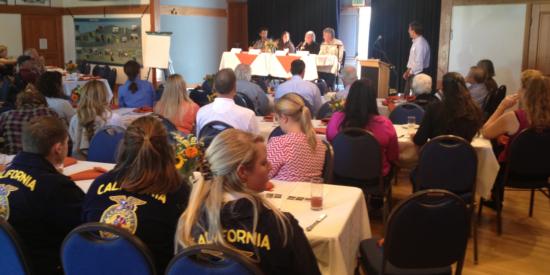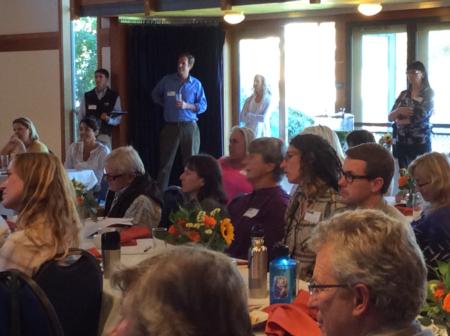Agricultural Diversification and Innovation in Marin
By Ralph Grossi - retired dairy operator and former Executive Director of the American Farmland Trust
Over the past 35 years, the face of Marin County agriculture has changed dramatically. To understand the Marin agricultural transition (really a renaissance) that we are currently celebrating, one has to look back to the '70s for the foundation laid by dynamic leadership on multiple fronts. The 1970s had been a difficult time for both the dairy and beef industries, having endured low market prices, significant cost inflation and an historic drought that deprived Marin ranchers of our most unique assets – adequate water and the usually abundant spring pastures that gave us an advantage over other livestock regions. At the same time, many families were entering generation transitions that put additional pressure on all involved.

But there were also some positives from that decade. The 1972 election of Gary Giacomini on a conservation platform and the subsequent adoption of a new countywide plan suggested that there was potential support for the future of agricultural in Marin. I say potential because at that time the emerging political support for “agriculture” was all about open space. The link between that desired goal and the farms of West Marin was not yet widely appreciated. That would shortly change as a new generation of Farm Bureau leaders, working with Supervisor Giacomini and others such as Planning Commissioner Jerry Friedman, Marin Conservation League Executive Director Karen Urqhart, and others began to develop an unusual partnership between the ranchers and the environmental community that would soon bear fruit.
The County and Farm Bureau’s new found environmental friends quickly realized that keeping the farming community viable was not only good for the local economy, but an inexpensive way to keep vast tracts of Marin in productive open space, on the tax roll, and contributing to the economy. The coalition that emerged soon become a formidable political force, first in planting the seeds of hope for a future in farming; and then more tangibly by becoming advocates for action. When the dairies were faced with the high cost of building structures to contain animal waste to comply with the relatively new Clean Water Act, the County Board of Supervisors voted to pay up to 25% of the cost – a move that saved many dairies. Then, when milk prices did not keep up with rapidly increasing costs, the coalition testified at milk price hearings in Sacramento to support a price increase, even though it would impact every consumer in the County – an unprecedented show of support. And finally, when dairies ran out of water due to the drought, the County once again stepped up by instructing the Public Works Department to develop and manage a water hauling initiative that, at its peak, delivered water daily to 53 dairies for nearly two years!

Of course, MALT isn’t the only reason for the evolution of Marin agriculture. A renewed interest in food, its origins and methods of production, the explosion in farmers’ markets, organic production, sustainability, and nutrition have come together as a perfect storm to launch local agriculture on a path to prosperity. None of us would have predicted in 1980 that new markets for organic, grass-fed, and artisan would play such a huge role in Marin. Along the way we have been blessed with key leadership from the UC Cooperative Extension, County Farm Advisor, and of course, the Board of Supervisors. With respect to the latter, West Marin has had the good fortune to have unprecedented political stability in having just two Supervisors represent the region over the past 43 years!
Like 35 years ago, we cannot today predict what the next generation of agriculture in Marin will look like. We know that locally grown, high quality food will always have a market. We already see some new concepts emerging – for example, environmental services and carbon sequestration might be “farm products” of the future. Together we have an opportunity to step back from the daily chores, to gain insights from others, and to dream about what might be next. Let’s let our minds wander!
About the author: Ralph Grossi milked cows on his ranch with his father in the 1970s and '80s. He was the founding Chair of the MALT Board of Directors, a role that led to him and his wife to Washington DC where he served as the Executive Director of the American Farmland Trust for 25 years. He has since returned from DC to the ranch and to the MALT Board.



